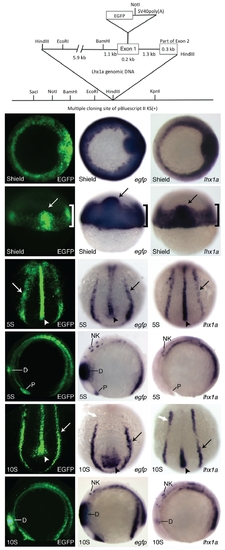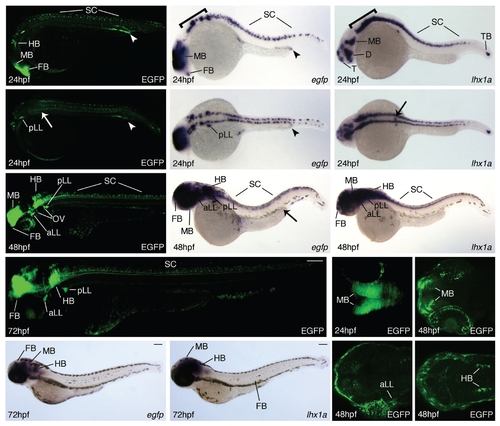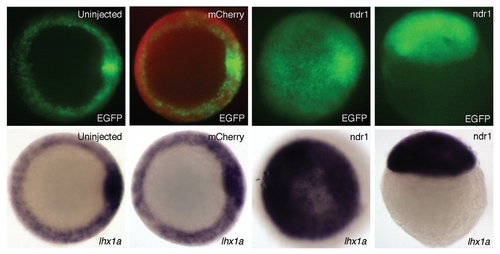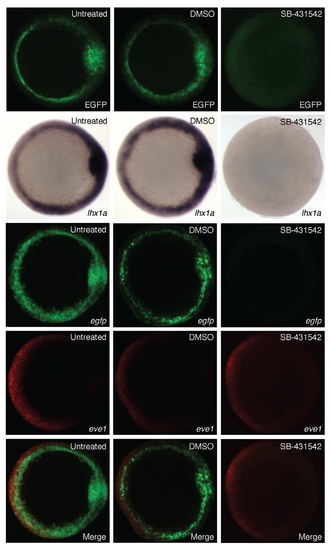- Title
-
Characterization of an lhx1a transgenic reporter in zebrafish
- Authors
- Swanhart, L.M., Takahashi, N., Jackson, R.L., Gibson, G.A., Watkins, S.C., Dawid, I.B., and Hukriede, N.A.
- Source
- Full text @ Int. J. Dev. Biol.
|
Construct design and early Tg(lhx1a:EGFP)pt303 expression. EXPRESSION / LABELING:
|
|
Expression of Tg(lhx1a:EGFP)pt303 during later development. EXPRESSION / LABELING:
|
|
Responsiveness of Tg(lhx1a:EGFP)pt303 to perturbations in Nodal signaling. |
|
Modulation of Tg(lhx1a:EGFP)pt303 expression by SB-431542. EXPRESSION / LABELING:
|




